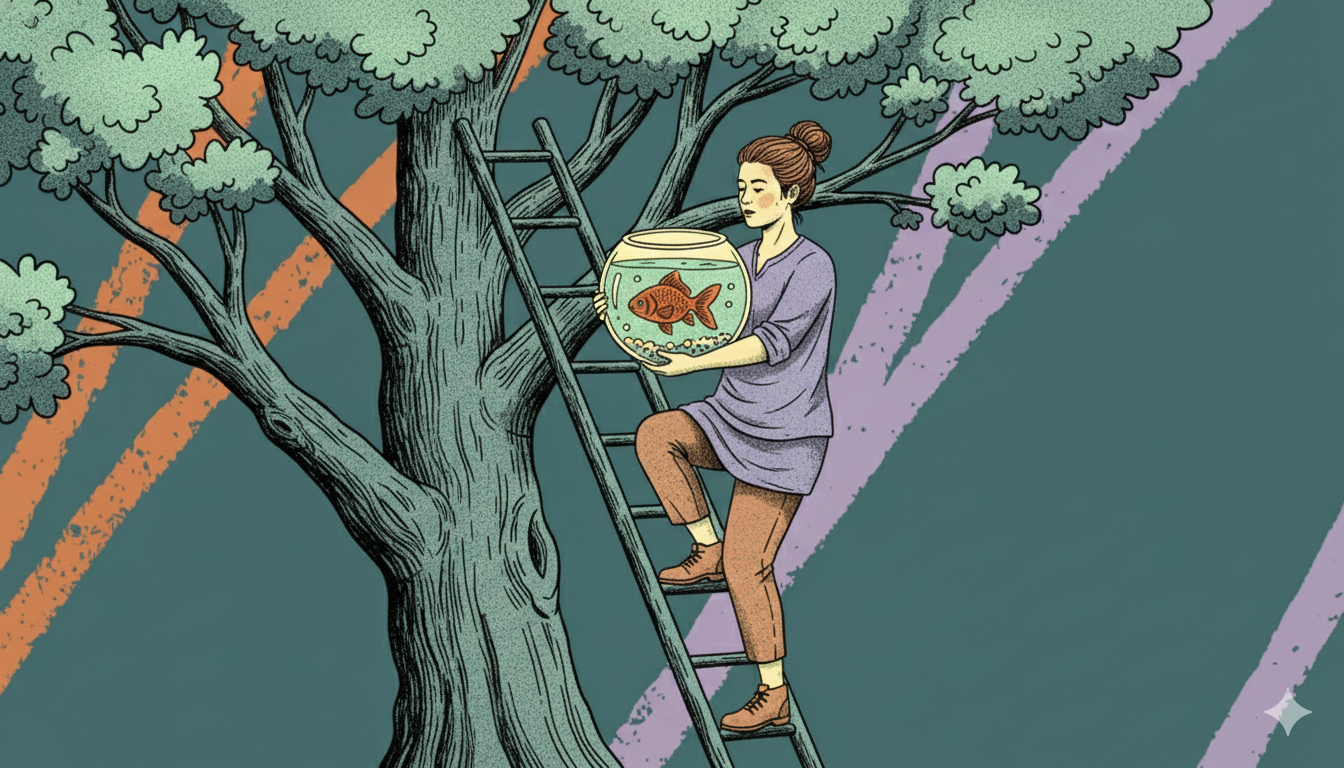
7 Uncomfortable Truths About Education from Award-Winning Teacher John Taylor Gatto
7 Uncomfortable Truths About Education from Award-Winning Teacher John Taylor Gatto
7 Uncomfortable Truths About Education from Award-Winning Teacher John Taylor Gatto
In 1991, John Taylor Gatto did something that shocked the education world. Just months after being named New York State Teacher of the Year, he quit. Not quietly into retirement, but loudly, with a scathing Wall Street Journal op-ed announcing: "I can't teach this way any longer. If you hear of a job where I don't have to hurt kids to make a living, let me know."
After 30 years in New York City public schools and multiple teaching awards, Gatto walked away at the peak of his career. Why would a celebrated educator abandon the classroom? Because he had observed patterns in the educational system he worked within—patterns that suggested schools were teaching some children unintended lessons that had little to do with academics and everything to do with diminishing their natural curiosity and potential.
The Seven Lessons Schools Really Teach
1. Confusion: Disconnected Knowledge Without Context
2. Class Position: Know Your Place in the Hierarchy
3. Indifference: Caring Too Much Is Dangerous
4. Emotional Dependency: Seeking External Validation
5. Intellectual Dependency: Waiting to Be Told What to Think
6. Provisional Self-Esteem: Your Worth Depends on Your Performance
7. You Can't Hide: Constant Surveillance Is Normal
The Unintended Impact on Children
Finding Balance: A Path Forward
The Teacher Who Knew Too Much
Before becoming a teacher, Gatto had lived many lives. He'd been a scriptwriter, advertising copywriter, taxi driver, jewelry designer, and even a speechwriter for political figures. This diverse background gave him a perspective few teachers had—he'd seen the "real world" that schools supposedly prepared children for. He once wrote speeches for Nixon and Spiro Agnew, and drove a cab through the streets of New York before ever stepping into a classroom.
In the classroom, Gatto was anything but conventional. He sent students on independent research projects at public libraries. He arranged for shy students to interview legislators at the state capitol. He found ways to connect learning to authentic experiences that mattered to his students. These unorthodox methods worked remarkably well, especially with students labeled "difficult" or "at-risk," earning him those teaching awards and recognition.
But the longer he taught, the more Gatto noticed a troubling disconnect between what schools claimed to do (educate) and what they actually accomplished (conformity). In his acceptance speech as Teacher of the Year, he stunned the audience by outlining what he called “the seven-lesson schoolteacher”—the hidden curriculum he believed all institutional schools inevitably teach.
The Seven Lessons Schools Really Teach
Gatto argued that beyond reading and math, these seven unintended lessons form the true "curriculum" of modern education:
1. Confusion: Disconnected Knowledge Without Context
"Everything I teach is out of context," Gatto admitted. Schools present information in fragmented, isolated units with few meaningful connections. History is separated from literature, math from science, all divided into arbitrary periods marked by bells. The result? Students who can pass tests but struggle to integrate knowledge or apply it to real situations. They know facts but miss the relationships that make those facts meaningful.
2. Class Position: Know Your Place in the Hierarchy
Schools sort, rank, and label children from their earliest years. Gifted, average, remedial. Advanced, regular, special needs. Through countless subtle and not-so-subtle messages, children learn to identify with their assigned category and rarely challenge these boundaries. "I'm not a math person" becomes a self-fulfilling prophecy, a permanent identity rather than a temporary challenge to overcome.
3. Indifference: Caring Too Much Is Dangerous
When the bell rings, students must drop whatever they're doing—regardless of interest or engagement—and move to the next subject. Gatto observed that this teaches children not to care too deeply about anything. Following your passion gets punished if it doesn't align with the schedule. Curiosity that exceeds curriculum boundaries becomes a liability rather than an asset. The natural excitement of discovery gets replaced by dutiful compliance.
Free Curriculum Guide
4. Emotional Dependency: Seeking External Validation
"By using stars and red checks, smiles and frowns, prizes and punishments, I force children to become emotionally dependent upon my praise," Gatto confessed. School success depends on pleasing authority figures, correctly anticipating what they want, and seeking their approval. Children learn to look outside themselves for validation rather than developing internal standards. Their emotional well-being becomes hostage to others' judgments.
5. Intellectual Dependency: Waiting to Be Told What to Think
Original thinking is risky in a system that rewards predictable answers. Gatto noted that "good students wait for a teacher to tell them what to do." They learn to wait for instructions rather than taking initiative, to follow directions rather than chart their own course. The habit of intellectual passivity becomes so ingrained that many adults struggle to think independently about complex issues.
6. Provisional Self-Esteem: Your Worth Depends on Your Performance
In school, your value is constantly measured, graded, and compared. Report cards, test scores, and academic rankings teach children that their worth is conditional and externally determined. "They should not trust themselves or their parents," Gatto wrote, "but should instead rely on the evaluation of certified officials." This creates adults whose sense of self rises and falls with each professional evaluation.
7. You Can't Hide: Constant Surveillance Is Normal
Students in traditional schools have minimal privacy or autonomy. They're monitored, supervised, and tracked throughout their day, even needing permission for basic bodily functions. Gatto observed that this constant oversight teaches children to accept continual surveillance as normal and necessary. They become uncomfortable with freedom and unsupervised time—conditions essential for developing self-regulation and independent judgment.
The Unintended Impact on Children
These seven lessons affect different children differently. Some students naturally thrive in structured environments and are minimally impacted. Others—especially those with creative, nonconforming, or independent temperaments—can be profoundly damaged by these implicit teachings.
Gatto said that when students start school, the light of learning is still in their eyes, but that systemically, we dim it year by year. "When children are young, you can see the love of learning in their eyes," Gatto once said. "Too often, that light dims with each passing year of schooling."
This doesn't mean teachers are at fault. Most educators enter the profession with genuine dedication to helping children grow. The lessons Gatto identified aren't taught deliberately but emerge from the structure and assumptions of the system itself—a system designed in a different era for different purposes.
Finding Balance: A Path Forward
While Gatto's observations might seem harsh, they point toward important considerations for all educational settings. One size doesn't fit all, and the most forward-thinking schools today—public and private—are finding ways to incorporate flexibility within their structure.
What might this look like? Some schools are creating space for student-directed projects alongside standardized curriculum. Others allow for different learning paces and styles, build real-world connections to abstract concepts, develop assessment approaches beyond standardized testing, and foster authentic collaboration rather than just competition.
For students who struggle in traditional settings, these adaptations can make all the difference. The challenge isn't dismantling our educational institutions but evolving them to better serve the diversity of minds they teach.
What Parents Can Do
Regardless of where your child learns, there are ways to counterbalance the unintended lessons Gatto identified:
Notice and nurture your child's intrinsic curiosity, even when it doesn't align with school priorities. Help them connect school subjects to real-world contexts that make knowledge meaningful. Emphasize that labels and categories (reading group levels, test scores) are temporary tools, not permanent identities.
Create space for deep dives into topics your child loves. Value the process of learning, not just the products that can be graded. Help your child develop internal standards of excellence rather than always looking to others for validation. Demonstrate that thinking differently isn't just acceptable—it's valuable.
Above all, be your child's advocate. You know them best—their strengths, challenges, interests, and needs. Whether they attend public school, private school, or learn at home, your involvement matters.
Gatto's Lasting Legacy
John Taylor Gatto passed away in 2018, but his insights continue to influence conversations about education reform. His courage in speaking uncomfortable truths opened space for broader discussions about the purpose of education and how we might better serve diverse learners.
He helped give a voice to homeschoolers, unschoolers, and those questioning the system long before it was mainstream to do so.
The future of education likely lies not in choosing between tradition and innovation, but in thoughtful integration of structure with flexibility, standards with personalization, community expectations with individual development. By working together—parents, educators, and communities—we can create learning environments that prepare children not just academically, but for lives of purpose, curiosity, and continued growth.
After all, as Gatto reminded us, "There isn't a right way to become educated; there are as many ways as fingerprints."
Sources
Gatto’s Final Interview: The Ultimate History Lesson – 5-hour video documentary (2012)
“I Quit, I Think” – Gatto’s resignation letter (1991) – Wall Street Journal, July 1991
“The Seven-Lesson Schoolteacher” – Gatto's original acceptance speech
Gatto’s Wikipedia Biography – Overview of his life and work
FEE: America's Most Courageous Teacher – Obituary and summary of impact, October 2018
Natural Child Project: Seven-Lesson Schoolteacher – Reprint of core arguments
Great School Wars – Biographical tribute with interview excerpts
Subscribe to The OpenEd Daily
Join 17,000+ families receiving curated content to support personalized learning, every school day.
.webp)
.avif)




